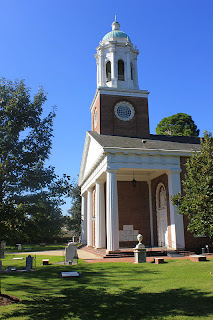Keep in touch with Trevor as he makes his way across the world and read his story as each step is made!!!
Wednesday, December 21, 2011
Plumas National Forest - California
Spanning over one million acres in the Sierra Nevada mountain range, the forest has been apart of the Forest Service for more than a hundred years. Dedicated to the preservation of the mountain landscape and the wildlife native to the area, the forest was established by President Theodore Roosevelt, the Pioneer President.
With the first bits of snow settling in on the higher points throughout the range, the lower elevations still held onto the last of the autumn season with golden leaves slowly drifting down to the damp ground below.
Morning Wonders - Forbestown, California
I took these spectacular light shots one early morning around Thanksgiving in the Central Californian valley. I do believe I stumpled upon the sun being in the right place with the right amount of water in the air with zero wind - Also known as being really lucky!
Thanksgiving in Forbestown, California
Knocking around on Thanksgiving morning I happened to stumble upon some amazing photographic opportunities! With a heavy dew, water droplets covered everything from the ground up with glistening diamond bubbles and the light fog made for an amazing layering effect in the evergreens. Its days like this that I am tahnkful for always having my camera with me at the ready!
Tuesday, October 18, 2011
Magnolia Cemetery - Augusta, Georgia
Established in the the Fall of 1818, the Magnolia Cemetery is one of the oldest and most unique cemeteries of Georgia.


As morbid as this may sound, I have always been fascinated with exploring in cemeteries. I don't quite understand where the idea of how cemeteries are haunted and a space filled with evil spirits. To me, there is only the sense of Peace, a lasting tribute to lives of our Forefathers, a Sanctuary to the times Past and the place where Memory of it's Community live on. This to me, is anything but haunted. The Magnolia Cemetery spans 60 acres of what once was a plantation which laid at the edge of the early 19th century river city of Augusta, but today lies near the downtown.

 The Magnolia Cemetery brings together various communities of Augusta. Within the walls of the cemetery are numerous Christian denominations, multiple Jewish areas, a Greek sector, and a section dedicated to the Confederate Dead. You can read all the books that you want. You can visit every battlefield you find. You can watch what ever documentary you come across on the History Channel. Although, none of those can make you stop and ponder, "Who was this? What was his story?" It is a chilling experience to see the marker of a grave to a soldier. The question I always ask myself when I look down upon the stone that lay at my feet, "What were they fighting for?" That is getting in touch with History.
The Magnolia Cemetery brings together various communities of Augusta. Within the walls of the cemetery are numerous Christian denominations, multiple Jewish areas, a Greek sector, and a section dedicated to the Confederate Dead. You can read all the books that you want. You can visit every battlefield you find. You can watch what ever documentary you come across on the History Channel. Although, none of those can make you stop and ponder, "Who was this? What was his story?" It is a chilling experience to see the marker of a grave to a soldier. The question I always ask myself when I look down upon the stone that lay at my feet, "What were they fighting for?" That is getting in touch with History.
The area of the cemetery where I shot these photos range in the time frame of the American Civil War and continue up to the turn of the 20th century. The dates seem to stop around the time of World War I, which I have been trying to discover what happened to the Hebrew Benevolent Society in Augusta. More to come hopefully...
St. James United Methodist Church - Augusta, Georgia


St. James was named after the founder, Reverend James Evans, and built due to the growing congregation of the former St. John Methodist church which was just down the way on Greene Street. This is one of the first churches that I noticed within the downtown area due to its location. The church is tucked in at the edge of one of the main roadways to the Heart of Augusta.


The original two story structure was built in 1856 out of local fired brick for a total construction cost of about $9,700. Later in 1886, the belfry was add and the church building was expanded to further suit the growing church community.
Historical Note: President Eisenhower worshipped at St James in 1954 during his Presidency.
Colonial Fort Augusta/Fort Cornwalis - Augusta, Georgia


Looking from the southern wall of St. Paul's toward the Savannah River stands the Celtic cross marking the location of Fort Augusta and Fort Cornwalis, which are the same thing, just depends on the year of American History we are discussing. At the base of the Celtic Cross marker lies a cannon pre-dating the Revolutionary War for General Olgethorpe in order to defend Fort Augusta from the Indian Nations. The date of the cannon is unknown, however it is believed to have been brought from England in the 1730's.
A view at the cross with the banks of the Savannah River holding back the waters.
St. Paul's Church - Augusta, Georgia
  |
| The Mother Church of Augusta |
Regarded as the oldest established building claimed to Augusta would be St. Paul's Church. The first of four churches built on this plot was the gothic church completed and founded by the Church of England in 1750. Located on what once was Fort Augusta just off the banks of the Savannah River, the first church was burned during the Revolutionary War. Continuing further on about that era, a notable site to visit within the shadow of the bell tower is the grave site of Colonel William Few, one of the signers of the Constitution of the United States.
  |
| Gate to St. Paul's Church |

The only relic of the first church that remains is the baptismal font which was shipped over from England in 1751.
The church that stands today was built after the Great Fire of Augusta in 1916 and is a close replica of the 1820 version of the church, only larger to fit the needs of the growing population of the River City.
Monday, October 17, 2011
Butt Memorial Bridge - Augusta, Georgia
This was the first time that I had visited this bridge after living in Augusta for about six months. When I first noticed it while taking one of the many speedways, I just thought this was just another bridge... I thought wrong!
The Butt Memorial Bridge has a very unique history behind it. Dedicated by President Taft in 1914
as the first and only memorial to the sinking of the Titanic in Georgia.

 Born and raised in Augusta, Archibald Butt led a less than desired childhood. His father died when he was fourteen and left him to care for his mother, Pamela Boggs Butt, who was the sister to the Confederate General William Boggs, and his two siblings. His first job as working as a librarian and spurred his compassion for reading and writing. Later, after attending the University of the South inTennessee, he became a reporter in Washington DC for major newspapers in the South. His reporting earned him the position of the first Secretary to the American Embassy in Mexico. Two days into the 20th Century, Butt was commissioned into the United States Army with the position of Captain. Serving abroad in the Philippines and after returning to the States to Washington DC, he met Theodore Roosevelt. In 1906, Butt was sent to Cuba to help maintain peace in the area and became Chief Military aide to Roosevelt after being recalled to the States. In the spring of 1912, Taft encouraged his friend to take a vacation to recover and recuperate since his health had been deteriorating the past few years. After taking a six-week vacation, Major Butt boarded the RMS Titanic. As we all know the story, Major Archibald Butt met his fate on April 15, 1912.
Born and raised in Augusta, Archibald Butt led a less than desired childhood. His father died when he was fourteen and left him to care for his mother, Pamela Boggs Butt, who was the sister to the Confederate General William Boggs, and his two siblings. His first job as working as a librarian and spurred his compassion for reading and writing. Later, after attending the University of the South inTennessee, he became a reporter in Washington DC for major newspapers in the South. His reporting earned him the position of the first Secretary to the American Embassy in Mexico. Two days into the 20th Century, Butt was commissioned into the United States Army with the position of Captain. Serving abroad in the Philippines and after returning to the States to Washington DC, he met Theodore Roosevelt. In 1906, Butt was sent to Cuba to help maintain peace in the area and became Chief Military aide to Roosevelt after being recalled to the States. In the spring of 1912, Taft encouraged his friend to take a vacation to recover and recuperate since his health had been deteriorating the past few years. After taking a six-week vacation, Major Butt boarded the RMS Titanic. As we all know the story, Major Archibald Butt met his fate on April 15, 1912.  Starting in the 1960's, the Augusta officials contemplated draining the canal in order to build a superhighway, which would have led to the one and only memorial to the Titanic in the State of Georgia and a tribute to one of it's prominent citizens. Although, with involvement of locals, the canal later became part of the historical district, but the old stone bridge suffered from neglect. Without any available government funding, the local people took fundraising into their own hands and in the years 1994 and 1995 held summer concerts with the every so catchy title of "Butt Jam" and adopted the slogan "Save Our Butt".
Starting in the 1960's, the Augusta officials contemplated draining the canal in order to build a superhighway, which would have led to the one and only memorial to the Titanic in the State of Georgia and a tribute to one of it's prominent citizens. Although, with involvement of locals, the canal later became part of the historical district, but the old stone bridge suffered from neglect. Without any available government funding, the local people took fundraising into their own hands and in the years 1994 and 1995 held summer concerts with the every so catchy title of "Butt Jam" and adopted the slogan "Save Our Butt".
Subscribe to:
Posts (Atom)
































